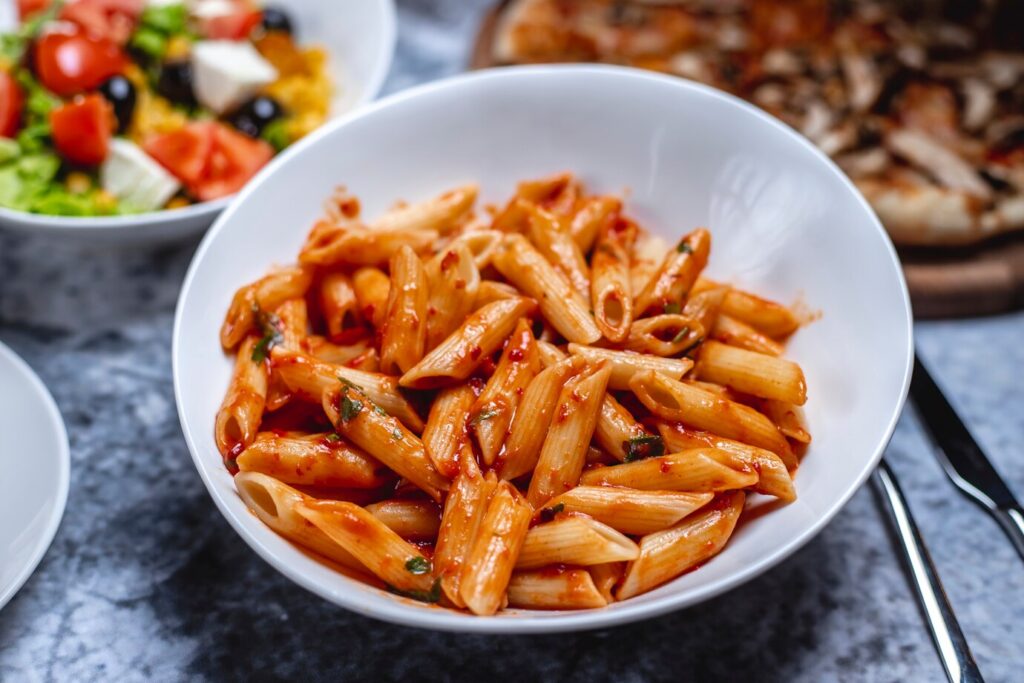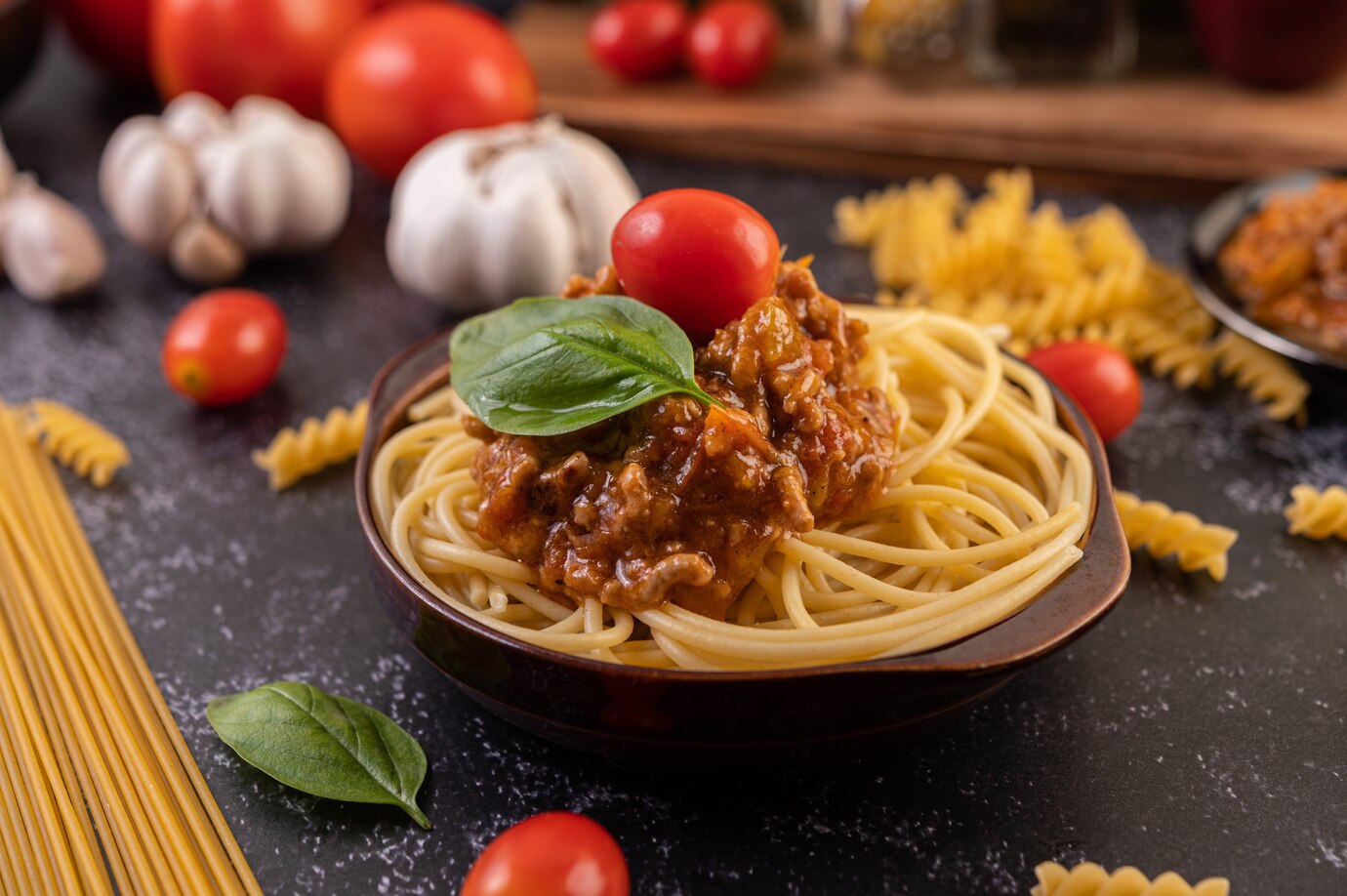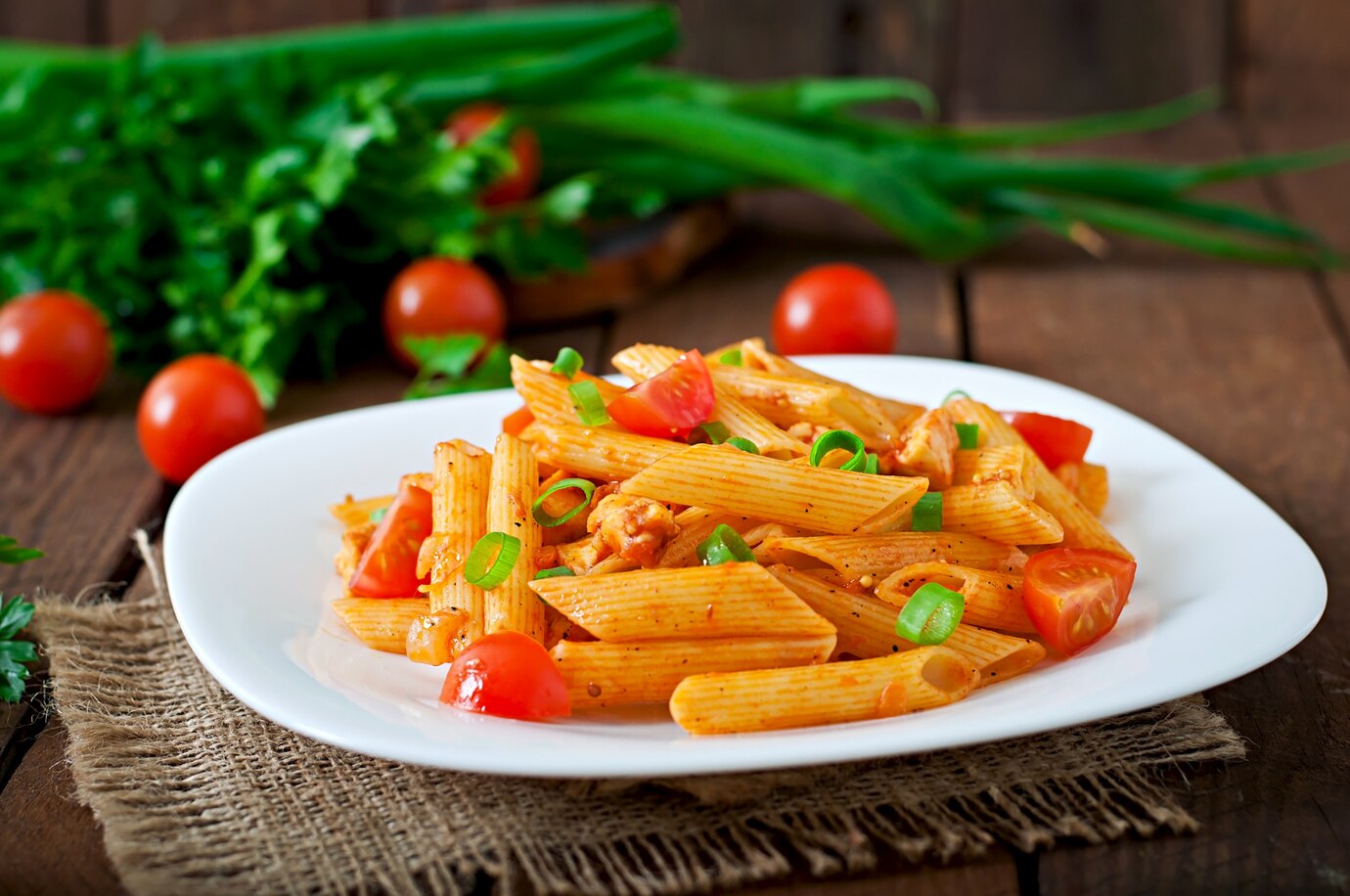The Food Blog

How to Make Authentic Pasta from Scratch
And making fresh pasta from scratch is a superb culinary experience that associates the taste of the original Italian food with your place. Homemade pasta has a better texture and flavour than store-bought pasta and can be adjusted to your tastes. Be it silky strands of tagliatelle, delicate sheets of ravioli or traditional spaghetti, mastering fresh pasta dough is one of those skills that will take your cooking to the next level.
Core Concept

Fresh pasta is traditionally made with just a few simple ingredients: flour, eggs, and sometimes water or olive oil. The key to achieving the perfect pasta dough lies in selecting the right flour, kneading it correctly, and allowing it to rest before rolling. Italian chefs often use either 00 flour for a silky, smooth texture or semolina flour for a firmer bite, especially in southern Italian pasta styles. The flour-to-egg ratio and the kneading process influence the pasta’s final texture, making attention to detail crucial.
Step-by-Step Guide
Ingredients:
- 2 cups (250g) 00 flour or all-purpose flour (or a mix of 00 flour and semolina)
- 2 large eggs
- 1 tbsp olive oil (optional)
- ½ tsp salt
- Water (if needed, to adjust consistency)
Instructions:
- Make a Flour Well: On a clean surface, pour the flour and create a well in the centre.
- Add Eggs & Mix: Crack the eggs into the well and gently beat them with a fork, gradually incorporating the flour from the edges.
- Form the Dough: As the mixture thickens, start kneading by hand until it comes together into a rough dough.
- Knead Thoroughly: Work the dough for about 10 minutes until it becomes smooth and elastic. If too dry, add a teaspoon of water; if too wet, sprinkle with extra flour.
- Rest the Dough: Wrap the dough in cling film and let it rest at room temperature for at least 30 minutes to relax the gluten.
- Roll It Out: Divide the dough into smaller portions and flatten slightly. Use a pasta machine or rolling pin to roll it out to the desired thickness.
- Cut the Pasta: Shape your pasta into fettuccine, pappardelle, or fill sheets for ravioli and tortellini.
- Cook & Enjoy: Boil fresh pasta in salted water for 2-4 minutes, depending on the thickness, and serve with your favourite sauce.
Pro Tips
- Use a pasta machine for consistent thickness and even rolling.
- Lightly dust the pasta with semolina to prevent sticking.
- Experiment with natural colourings by adding spinach (green), beetroot (red), or squid ink (black) to the dough.
- If making filled pasta, ensure the edges are well-sealed to prevent leakage during cooking.
- For extra silkiness, add a splash of olive oil to the dough for a richer mouthfeel.
Important Considerations

- Flour Type Matters: Different flours impact the texture—00 flour is softer, while semolina adds firmness.
- Resting Time: Skipping this step may result in tough dough.
- Rolling Technique: Too thin and the pasta may break; too thick and it may be chewy.
- Cooking Fresh Pasta: It cooks much faster than dried pasta—keep a close eye to avoid overcooking.
Best Practices & Additional Insights
- Pairing with Sauces: Delicate pasta works best with light sauces (butter or oil-based), while robust pasta shapes can handle heavier sauces like ragù.
- Storing Fresh Pasta: Uncooked pasta can be stored in the fridge for a day or frozen for up to a month.
- Making It Vegan: Substitute eggs with a mix of water and olive oil for an egg-free pasta variation.
- Enhancing Flavour: Add herbs like basil or thyme to the dough for a subtle aroma.
- Drying for Storage: Hang pasta strands on a drying rack or spread them on a floured surface to prevent clumping.
- Avoid Over-Flouring: While it’s important to prevent sticking, too much flour can make the pasta tough and dry.
- Boiling Water Properly: Use plenty of boiling, salted water to prevent pasta from sticking together and ensure even cooking.
FAQs
1. Can I make fresh pasta without a pasta machine?
Yes! A rolling pin works just as well; just ensure even thickness when rolling the dough.
2. How do I prevent my pasta from sticking together?
Toss freshly cut pasta with a little semolina or flour to keep it from clumping.
3. Can I use whole wheat flour for pasta?
Absolutely! Whole wheat flour will yield a denser, nuttier pasta. You may need to add more moisture to the dough.
4. How long does fresh pasta last?
Fresh pasta lasts up to a day in the fridge and can be frozen for longer storage.
5. What’s the best way to dry pasta for storage?
Hang it on a drying rack or spread it out on a tray with semolina flour to prevent sticking.
6. Why is my pasta too tough?
This can happen if the dough wasn’t kneaded enough or if it wasn’t rested properly. Be sure to knead until smooth and elastic, and allow the dough to rest for at least 30 minutes.
7. Can I flavour my pasta dough?
Yes! You can add finely chopped herbs, spices, or even cheese like Parmesan to enhance the flavour.
Fresh Pasta at Home

By following these steps and tips, you’ll soon be making authentic homemade pasta like a pro! Whether crafting a comforting bowl of fettuccine Alfredo or experimenting with stuffed pasta, the possibilities are endless. Making fresh pasta is not just about the final dish—it’s about the joy of creating something from scratch. So gather your ingredients, roll up your sleeves, and enjoy the process of bringing a taste of Italy into your home. Buon appetito!









